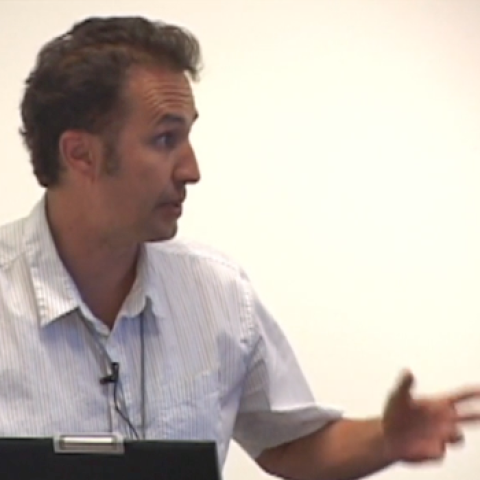Interdisciplinary Initiatives Program Round 6 - 2012
Peter Maxim, Radiation Oncology (no longer at Stanford)
Billy Loo, Radiation Oncology
Sami Tantawi, SLAC/Particle Physics and Astrophysics
Modern radiation therapy (RT) for cancer is capable of delivering highly accurate, sharply focused radiation doses to tumors, which has led to better tumor control and less treatment side effects. One major remaining hurdle to improving this performance is motion of the patient and tumor while the radiation is being delivered, typically taking 15-90 minutes, and complex procedures are used to try to compensate for this motion. A fundamentally different approach to managing motion is to deliver the treatment so rapidly that there is no time for significant motion. We propose to develop a new type of RT system using rapidly scanned beams from many directions through electromagnetic steering with no mechanical moving parts, referred to as pluridirectional high-energy agile scanning electron radiotherapy (PHASER). Such a system would be similar in size and cost to commonly available systems, but would deliver an entire treatment of high-dose RT in less than one second, and with even sharper dose sculpting than the current state-of-the-art. In addition, extremely rapid radiation delivery may have a more effective biological impact on tumors for the same radiation dose.
We have established a unique multidisciplinary collaboration between Stanford University Department of Radiation Oncology and the Accelerator Research Division at Stanford Linear Accelerator Center (SLAC) National Accelerator Laboratory, with the following goals: 1. To perform highly accurate (Monte Carlo-type) computer simulations to determine best operating specifications for PHASER; 2. To perform experimental measurements at SLAC using the type of radiation beam that will be used in PHASER, to validate the simulations.
In the U.S., cancer is the leading cause of death in adults under age 85, and of the 1.5 million patients diagnosed with cancer each year, about two thirds will benefit from RT. Worldwide, the number of patients who could benefit from RT far exceeds the capacity. Fundamental improvements in RT therefore could save countless lives. The high speed, compactness, and low cost of PHASER will increase accuracy, improve clinical outcomes, and increase accessibility for cancer patients in the U.S. and globally. Our research team combines the pioneering clinical, medical physics, and radiobiology expertise of the Department of Radiation Oncology at Stanford University with the world-class accelerator design expertise of SLAC, where the enabling technologies underlying the PHASER concept are already being developed.


